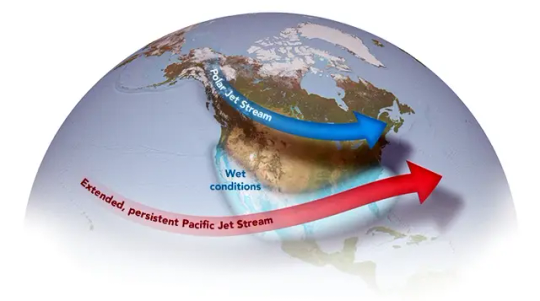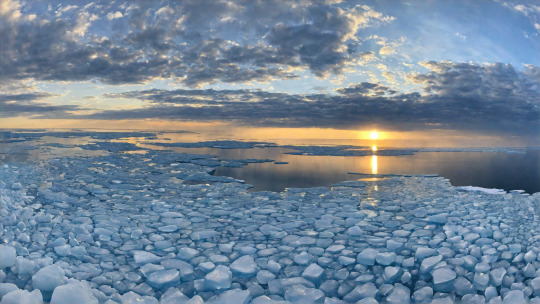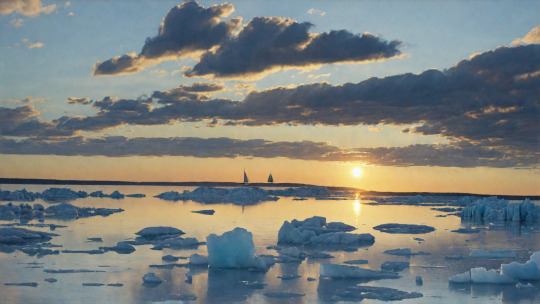#ELNIÑO
Explore tagged Tumblr posts
Text
OMG We're Toast! Earth's Hottest Year Ever (So Far)

Just when you thought things couldn't get any hotter, it turns out 2024 might be even warmer than 2023, which was the hottest year on record EVER. 🔥🤯
Scientists are freaking out because this extreme heat is being caused by a combo of global warming and El Niño. Basically, the planet is already baking, and now El Niño is throwing gasoline on the fire.
Some scientists say 2024 could be the hottest year ever recorded, while others are a little more cautious. But no matter what, it's clear that Earth is on a seriously dangerous warming trend.
This isn't just about sweaty summers and uncomfortable holidays. Extreme heat is deadly. It can cause heatstroke, heart problems, and even death. And it's not just humans who are suffering. Plants and animals are also being affected by the heat, which is disrupting ecosystems all over the world.
#united states#climate emergency#climate change#environment#climate crisis#climate catastrophe#climate action#ElNiño#new years eve#heatwave 2023
6 notes
·
View notes
Text

O Rio Negro atingiu o seu menor nível desde 1902 e provavelmente o seu maior para os próximos anos. instagram.com/porracristo/
#designativista#amazonas#rionegro#seca#elniño#mudançasclimaticas#globalwarming#aquecimentoglobal#botorosa#fishing#amazonia#doomsday#sunset#illustration#pesca#deforestation#porracristo#art#design
7 notes
·
View notes
Text
#ElNiño and #LaNiña: What's it all about?
#ElNiño#LaNiña#fyi#psa#weather#ecology#earth#education#pacific#climate#atmosphere#earthporn#educate yourselves#educate yourself#educators#hot and educated#climate change#climate crisis#climate emergency#climate action#climate and environment#environmentalism#ausgov#politas#auspol#tasgov#taspol#australia#fuck neoliberals#neoliberal capitalism
2 notes
·
View notes
Link
0 notes
Text
El Niño e La Niña na Amazônia: um alerta para o futuro climático
Relatório apontou a possibilidade de ocorrência do fenômeno La Niña até o fim deste ano e novas manifestações do fenômeno El Niño em 2025. Pesquisador ouvido pelo Vocativo afirma que há formas do poder público estar preparado para qualquer cenário
Na última semana, um relatório da Administração Oceânica e Atmosférica Nacional (NOAA em inglês), apontou a possibilidade de ocorrência do fenômeno La Niña até o fim deste ano e novas manifestações do fenômeno El Niño em 2025, trazendo preocupações sobre novos eventos climáticos extremos na Amazônia. Embora ainda seja cedo para qualquer tipo de previsão, pesquisador ouvido pelo Vocativo afirma…
0 notes
Text
Philippines Boosts Disaster Preparedness with US and UN Support
Scan the QR code to get this post on the go. The Philippines, ranked as the world’s most disaster-prone country, is amping up its emergency response capabilities with a crucial workshop and ongoing support from the United States and the United Nations World Food Programme (WFP). Strengthening Collaboration for a Powerful Response The second Disaster Preparedness and Humanitarian Operations…

View On WordPress
#Climate Shocks#Disaster education#disaster preparedness#Disaster prevention#DPHOW#ElNiño#Humanitarian Aid#Office of Civil Defense#philippines#the big one#USAID#WFP
0 notes
Text
Riscaldamento globale e cambio dei venti di El Niño

El Niño non sta solo alterando il clima ma anche il mare. Tutti gli effetti di El Niño: non influenza nettamente soltanto il clima ma anche un aspetto chiave dei mari. Giornalista pubblicista ed esperto copywriter, ho accumulato esperienze in TV, redazioni giornalistiche fisiche e online, così come in TV, come autore, giornalista e copywriter. Per Libero Tecnologia scrivo nella sezione Scienza. Nel corso degli ultimi anni si è fatto un gran parlare di el Niño, considerando il contributo evidente di tale evento all’innalzamento delle temperature nel corso del 2023. Il suo impatto, però, non si è ancora concluso. Al tempo stesso occorre ancora comprendere al meglio tutti i suoi possibili impatti climatici e non solo. Gli scienziati hanno infatti confermato come possa anche alterare la chimica delle acque costiere. La ricerca su El Niño Chi ha ottenuto risposte a dir poco interessanti in merito a El Niño è un team del Jet Propulsion Laboratory della NASA. Sono state sfruttate delle osservazioni satellitari per riuscire a monitorare la salinità della superficie oceanica globale. Dati relativi a un decennio, precisamente dal 2011 al 2022. Questa caratteristica è molto importante, dal momento che può dirci tanto su come l’acqua dolce cada, scorra ed evapori tra terra, atmosfera e oceano. È quello che chiamiamo ciclo dell’acqua, come ci hanno ben insegnato a scuola. Le variazioni di salinità, da un anno all’altro, in prossimità delle coste, sono fortemente connesse a ENSO, ovvero a El Niño Southern Oscillation. Un’espressione che tiene conto tanto del fenomeno citato quanto della sua controparte, La Niña. L’ENSO influenza le condizioni meteo di tutto il mondo, seppur in maniere differenti. El Niño si lega a temperature oceaniche più calde della media nel Pacifico equatoriale. Ciò porta piogge e nevicate abbondanti negli USA sud occidentali e siccità in Indonesia. Schemi invertiti, invece, durante La Niña. Guardando ai dati del 2015, gli scienziati hanno rilevati come ci sia stato un effetto notevole sul ciclo dell’acqua globale. Minori precipitazioni sulla terraferma e minore deflusso fluviale, con conseguenti livelli di salinità al ribasso, fino ad aree distanti 200 km dalla costa. I dati sulla salinità Il riscaldamento globale ha mostrato ai ricercatori una trasformazione del ciclo dell’acqua. Nel processo rientra un aumento considerevole degli eventi estremi di precipitazione e deflusso. Gli impatti sono maggiormente rilevabili tra terra e mare, ovvero nelle acque costiere. Ecco le parole di Severine Fournier, l’autrice principale dello studio presso il JPL: “Data la sensibilità sia alle precipitazioni che al deflusso, la salinità costiere potrebbe fungere da campanello d’allarme. Si indicano altri cambiamenti in atto nel ciclo dell’acqua”. Ha osservato come alcune acque costiere nel mondo non siano ben studiate, nonostante il fatto che il 40% della popolazione mondiale, circa, viva nell’arco di 100 km dall’area costiera del proprio Paese. Uno dei motivi è rappresentato dal costo esoso dei misuratori fluviali e altri sistemi di monitoraggio. Si sottolinea così l’importanza degli strumenti satellitari. La missione Aquarius è stata lanciata nel 2011 e ha sfruttato la sensibilità dei radiometri per riuscire a evidenziare i più sottili cambiamenti nelle emissioni di radiazioni a microonde dell’oceano. Tutto ciò è frutto di una collaborazione tra NASA e CONAE, ovvero l’agenzia spaziale argentina. A ciò si aggiungono i dati della missione SMOS dell’ESA e la missione SMAP della NASA. L’insieme ha consentito ai ricercatori di scoprire che la salinità superficiale delle acque costiere riesce a raggiungere la media planetaria massima, 34,50 unità pratiche di salinità, ogni marzo. In seguito scende alla media globale minima verso settembre. Differente il discorso in oceano aperto, con un ciclo che vede il minimo della salinità superficiale da febbraio ad aprile e il massimo da luglio a ottobre. Ciò perché il volume d’acqua consente di subire meno l’effetto del deflusso dei fiumi e dell’ENSO. Read the full article
#condizionimeteo#ElNiño#ENSO#esplorazionespaziale#missioneAquarius#Nasa#SeverineFournier#superficieoceanica
0 notes
Link
0 notes
Link
#cropyields#ElNiño#IMD#India#IndiaMeteorologicalDepartment#Indiamonsoonrainfall2023#IndianOceanDipole#kharifcrops#long-periodaverage#PacificOcean#rabiseason#sowing#weatherforecast
0 notes
Text



The heart of North America feels strangely incomplete this winter. The mighty Great Lakes, usually adorned in a gleaming coat of ice, lay bare and vulnerable. Temperatures soar, fueled by El Niño's fiery breath, leaving behind only ripples of worry.
Is this a glimpse into a future forever altered? A stark reminder of a changing climate's chilling grip? Or a temporary thaw, soon to be forgotten with the spring blooms?
The silence of the ice echoes, carrying questions on the wind. What stories are woven into the water's depths, normally hidden by a frozen embrace? What impact will this bareness have on ecosystems, communities, and the very soul of the region?
3 notes
·
View notes
Text
A Storm Is Near As @BigFreedia Preps "Central City" Album With "El Niño" Feat @LilTunechi & @xoboyfriend_
The sirens are walling and the city streets are filled with anticipation. Delivering hit after hit these last couple months, Big Freedia is taking over the airwaves with the up coming album Central City. Fans get a fiery track El Niño signaling this album is about to tear up the place. Alongside features from acclaimed rapper Lil Wayne and rising star Boyfriend, the album features captivating…

View On WordPress
#ADAWorldwide#BigFreedia#Boyfriend#CentralCity#Ciara#ElNiño#FaithEvans#Kamaiyah#KellyPrice#LilWayne#QueenDiva#Sonyae#TheSoulRebels
0 notes
Link
Este novo episodio de Investigar na USC responde á pregunta que leva por título: Chegará a alerta por seca en Galicia? Para facer unha análise completa da cuestión, entrevistamos a Alberto Martí, profesor de xeografía. Conversamos con el sobre as reservas de auga en Galicia, os plans das institucións e as medidas de aforro, o tipo de consumo de auga por parte dos galegos, a conciencia ecolóxica, o fenómeno 'El Niño' e moito máis.
0 notes